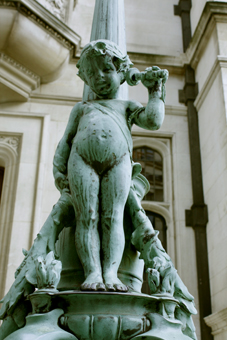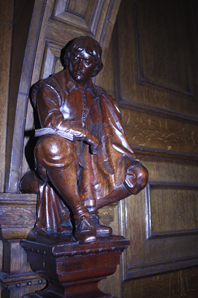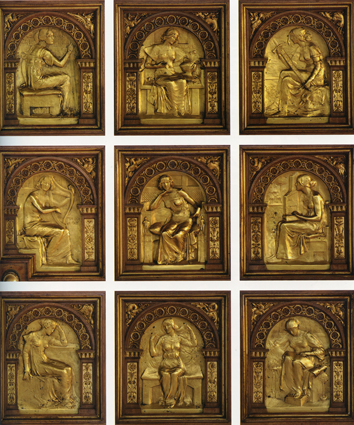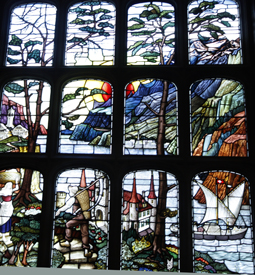Not far from our home in Jerusalem, for seven years we watched the construction of an elegant new hotel – the Waldorf Astoria. According to their General Manager “It has been the longest restoration project in Israel’s history”. I hesitate to correct him, but King Solomon set the record by taking twenty years to build the First Temple in Jerusalem. Later, so the Bible says, the Second Temple was rebuilt in only three years – they evidently had a good team of contractors. With regard to the eventual rebuilding of a Third Temple, there are those who say it will descend from heaven ready made, like a delivery from Amazon or Ikea but with no D.I.Y assembly necessary. It seems the hotel Manager is only partially accurate in his claim.
The hotel stands on the site where once stood the Palace Hotel, built in 1929 by the notorious Grand Mufti of Jerusalem. Most sources refer to him as ‘the notorious’, probably because of his choice of friend Adolph Hitler – with whom he shared a wish to destroy all the Jews. The Mufti craved a magnificent edifice where he could entertain distinguished Arab rulers and British officials. He pressed to have it completed before the new King David Hotel being built further up the street, however his ‘Palace’ operated for a mere six years before it closed because of stiff competition from its more stately neighbour.
 The Palace Hotel Jerusalem 1929
The Palace Hotel Jerusalem 1929
The story of Waldorf Astoria begins with John Jacob Astor a German immigrant to the USA (1763-1848) – the founding father of one of the world’s great commercial dynasties and reputedly the first multi millionaire in the United States. His great grandson William Waldorf Astor was born in 1848 the year that John Jacob died. It was William who built the first Waldorf Hotel in New York in 1893, apparently to spite his cousin, John Jacob Astor IV, who then erected a seventeen storey Astoria Hotel adjacent to the Waldorf. John Jacob sadly met an untimely end when he drowned in the Titanic disaster, 1912.
Following family tradition William became the wealthiest man in the world – partially by choosing his parents well but also through his business acumen – yet he was not happy living in New York being constantly fearful that his children would be kidnapped. So in 1891 he moved with his family to London. His ambition was to reinvent himself and become a member of the highest echelons of British society. He lived, as one might expect, in the most expensive mansion in Carlton House Terrace and then bought Cliveden – a magnificent stately home near Windsor, from the Duke of Westminster. However William needed an Estate Office – no working from home for him, so he bought a plot of land near the Middle Temple facing the Thames and in 1895 began constructing his headquarters that would become No 2 Temple Place. He gave his architect, John Loughborough Pearson, free rein to create ‘the perfect building irrespective of cost’.
 Bronze cherub holding phone
Bronze cherub holding phone
Pearson was well respected with a reputation as one of the great Gothic revivalists. The building, of mock Tudor design, was constructed in Portland stone. On each side of the entrance stand pillar lamps adorned with androgynous bronze cherubs. One clutches a filament electric light bulb, the second holds a telephone to his ear and down below a smaller cherub is talking into a speaker. These figures paid homage to the great 19thcentury American inventors Thomas Edison and Alexander Graham Bell, giving Astor’s visitors the feeling that they were entering a very ‘modern’ establishment indeed.
This feeling evaporates once you reach the entrance hall as the striking floor, made from a mix of rare marble in colours of reds, greens, blues and golds is more reminiscent of ancient Rome. An elegant mahogany staircase rises up to three levels, illuminated from above by a glittering stained glass skylight.
Astor was a well-travelled connoisseur of the arts with a particular passion for books. Reflecting this, many of the interior panelled walls are decorated with carvings from history and literature. The Three Musketeers Athos, Porthos and Aramis stand proudly up the staircase. Characters from Shakespeare, Robin Hood and Ivanhoe together with historical personae such as Cardinal Wolsey, Columbus, Marco Polo and Captain Cook compete for space with Dante and Galileo.
The Great Room has carved and gilded portraits around the walls. Astor, whose eyesight was poor, requested gilding so that he could see them better. These historical and fictional personalities are arranged in no particular order resulting in curious juxtapositions. The main door also displays gilded carvings but this time of romantic heroines from King Arthur’s Tales. It seems Astor had a penchant for damsels in distress as in other parts of the house we find Juliet, Desdemona, Cordelia amongst others. Queen, Ann Boleyn, also has a place and it is possibly his admiration for her that prompted him to add Hever Castle, once her home. to his property portfolio.

Carvings on the door to the Main Hall.
For me the outstanding features of the main hall are the stained glass windows at either end of the room, one depicting a sunrise and the other a sunset, based on rural scenes, some narrative, others descriptive. One could easily spend hours examining the details of these exquisite panels.
Reports say that Astor was a brusque, monosyllabic man with no sense of humour. He vowed never to return to the USA declaring it ‘unfit for a gentleman to live in’. Temple Place became his refuge, where he could retreat from the world and feel safe, particularly following the death of his wife, aged only 36. In Temple Place he was physically as well as emotionally secure, for in the great room was a lever, which when pressed would lock every door in the house instantly. He also built three strong-rooms for important documents, money and other valuables. stained glass sunrise window
stained glass sunrise window
Today the building is open to the public only once or twice a year. It has a palpable sense of history and is well worth a visit. However If it is closed, do not despair, for one may instead travel to Cliveden, now a luxury five star hotel, for afternoon tea (£75 p.p.)
Cliveden had an ‘unapologetic history of debauchery’. I well remember in 1960 the huge scandal that took place there involving John Profumo, the then Tory Defence Minister and a 19 year old prostitute, Christine Keeler. ( who was also having an affair with a Russian spy). Profumo had to resign. Another key player in this scandal was Mandy Rice Davies, who married an Israeli, moved to Israel and converted to Judaism. She later returned to London where she described her life as ‘one slow descent into respectability’.
In 2014 the Cliveden offered a one off extra special spread costing £550 per couple, including standard English cream tea, cognac preserve, beluga caviar and the finest Da Hong Pau Tea, harvested, as I am sure you know, from 1000 year old plants. You could also partake of Kopi Luwak coffee at £50 per cup. This coffee is made from part digested coffee cherries eaten and then defecated by the Asian civet cat. The excrement is collected and made into coffee. I choose not to know how the workers gather it but trust they are permitted to wear plastic gloves.
I doubt whether this special afternoon tea included waldorf salad created in 1896 at the New York Waldorf Astoria by maitre d. Oscar Tschirsky. It is unthinkable to consider what a dismal world we would now live in without his celery and apple creation, or his praiseworthy efforts to popularise Thousand Island Dressing.
Benjamin Franklin once said “If you would not be forgotten as soon as you are dead, either write something worth reading or do something worth writing about”.
I wonder how William Waldorf Astor would feel today if he knew that most people associate ‘Waldorf’ with his eponymous salad, rather than for any of his more illustrious achievements.

This fun history expertly told. Please,please, please more from London.
LikeLike
As ever beautifully written. As sublime as the building it describes !!
LikeLike
A little of everything in this enjoyable tale from cherubim forecasting the advent of social media to gilded paintings to family oneupmanship to the fall from grace of members of the political elite. A diverse and most enjoyable read which has whetted my appetite for a visit to this establishment. Thanks so much Ruth.
LikeLike
Great as usual. I am an English History aficianado – so would love more of these. However, I do not like Waldorf salad!!!
LikeLike